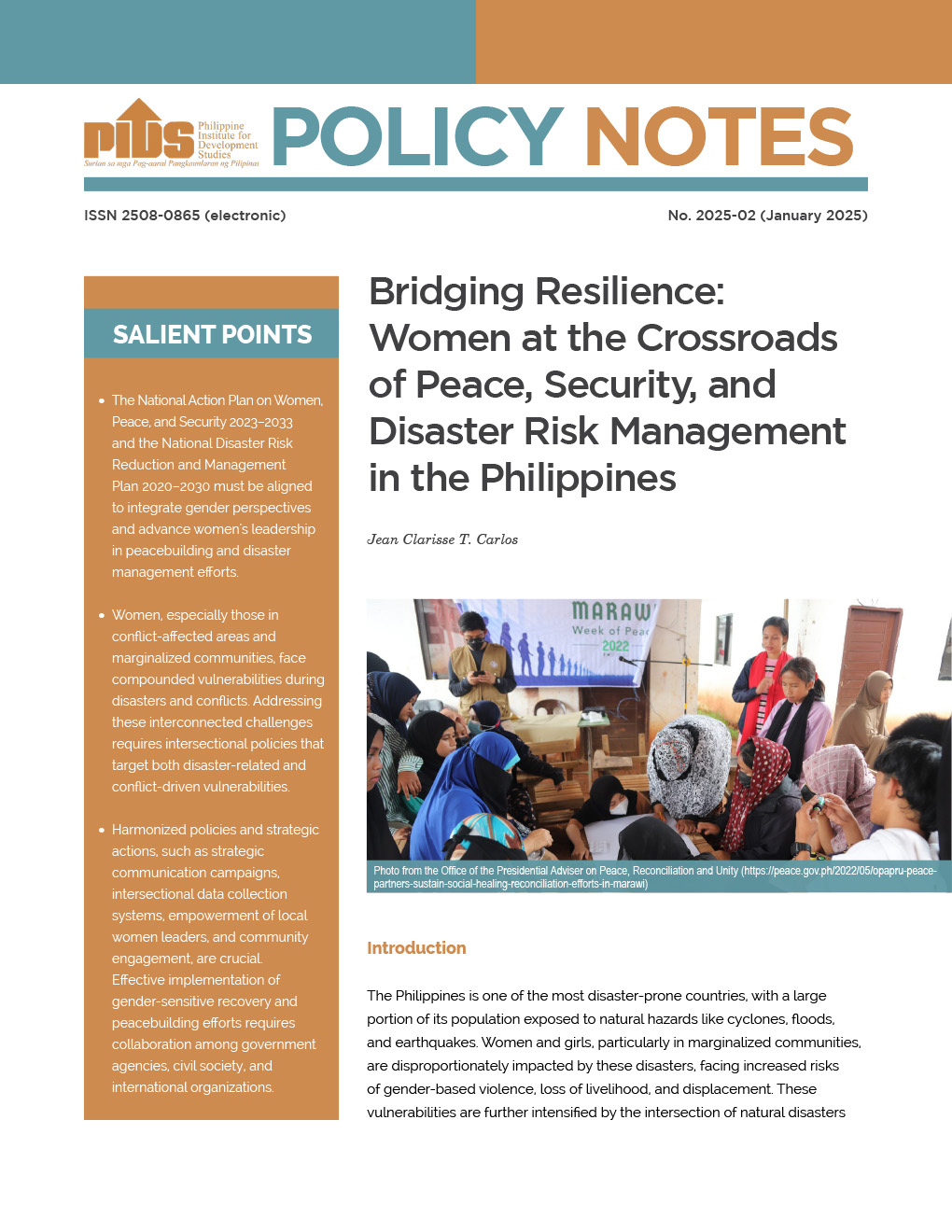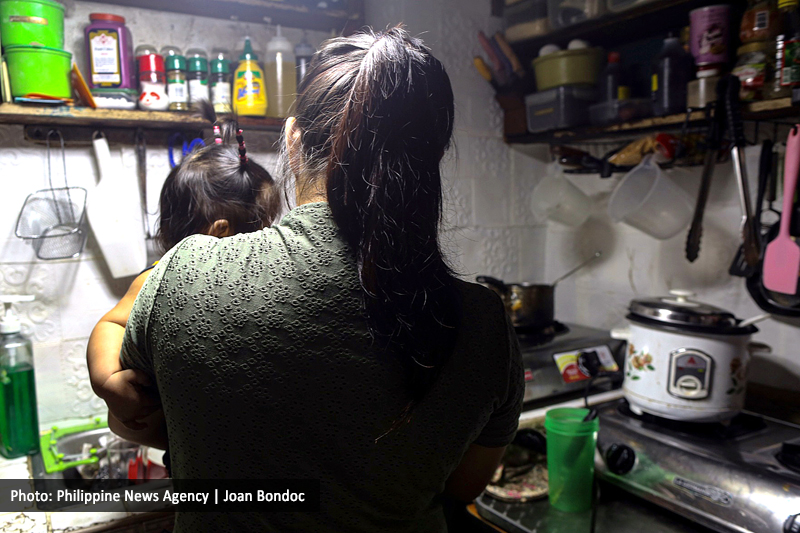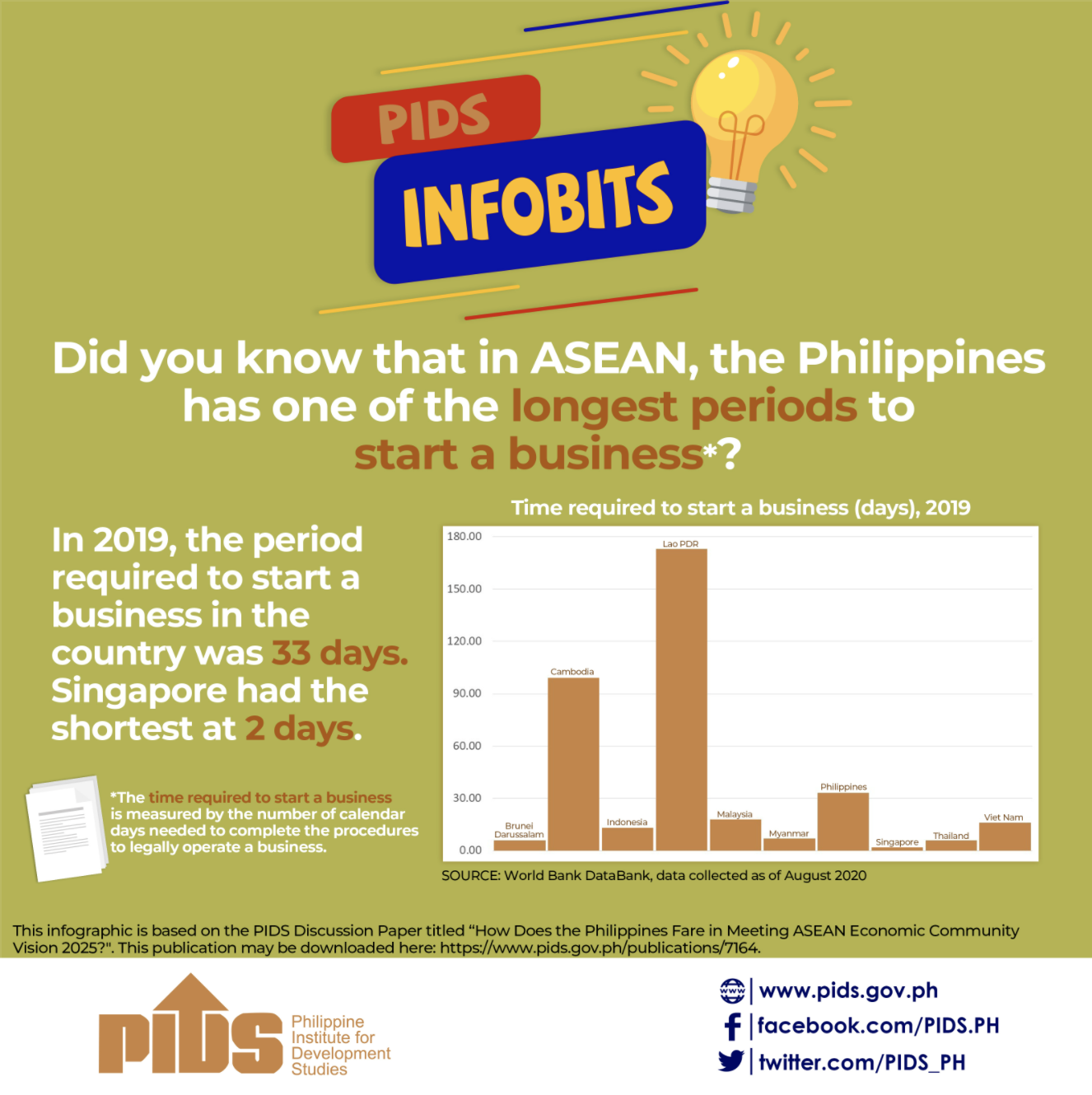WOMEN’S unpaid work, such as taking care of children and doing house chores, could be worth over a trillion pesos every year, according to the Philippine Institute for Development Studies (PIDS).
According to PIDS Senior Research Fellow Michael Abrigo, the monetary value of women’s time spent on child care, elder care and house chores like cleaning, cooking and washing makes up 20 percent of the country’s GDP.
Based on 2018 data, the BusinessMirror estimated that using constant 2000 prices, this could reach P1.84 trillion, given the economy was worth P9.2 trillion. But using current prices, the value of women’s unpaid work could reach P3.48 trillion since GDP was at P17.42 trillion.
“We want to bring home the message that housework has value, na hindi ibig sabihin nito na porke’t nasa bahay sila ay walang value ’yung oras nila [it does not mean that just because they are at home, their time has no value]. We want to convert these time units into monetary units,” Abrigo explained.
Abrigo said he and his coauthor used the National Transfer Account (NTA) and the National Time Transfer Account (NTTA) to measure the worth of unpaid work. The NTA captures the productive activities within the production boundaries of the GDP while the NTTA estimates the time spent on unpaid work.
Citing data in 2015, he said paid work of both sexes was valued at P9.3 trillion while their unpaid work totaled P2.5 trillion. Women’s contributions in these were at 40 percent and 76 percent, respectively.
While Filipino women are encouraged to join the labor force, there are factors to be considered, Abrigo noted. To entice women to spend more time on paid market activities, Abrigo urged the government to look for ways to improve their labor participation like the implementation of flexible working arrangements, telecommuting, and extended maternity leave.
Based on the latest Labor Force Survey (LFS), nearly 11 million Filipinas stopped looking for jobs in January as they were forced to just stay in the house and perform their domestic duties, according to the latest data from the Philippine Statistics Authority (PSA).
PSA Assistant National Statistician Wilma A. Guillen earlier told the BusinessMirror that a total of 28.87 million Filipinos were not in the labor force (NITLF) in January 2019. This was a 7.64-percent increase from the NITLF of 26.82 million in January 2018.
Nearly 40 percent of the total or 10.569 million is composed of women who preferred to stay at home to attend to their duties to their families and own households. However, this was a 2.15-percent contraction from the 10.8 million posted in January 2018.
“If we want a mother to work outside the home, she should have a substitute to do her work at home. For example, if she has children but has to work outside, who will look after them? That could be the grandfather or a domestic worker. But if we hire a domestic worker, that person will also be forced to leave behind a family. Who’ll care for them? So, this creates a vicious cycle,” he said.
Moreover, Abrigo said that, based on the regression analyses done by his team, mothers who spent more time working outside their homes are more likely to have children who are not attending school, or are lagging behind their peers. Other studies also show that families of working mothers who spend less time at home tend to eat more outside, or are less healthier.
According to Abrigo, these are some of the reasons that hold back women from joining the labor force. A way to resolve this issue, he proposed, is to encourage men to help their spouses do household chores.
As of 2015, only 2 percent of men from single-family households are at home doing the chores of mothers and their spouses.
In terms of time spent at work, Abrigo noted some movements toward gender parity in the Philippines over the last 25 years.
“In the Philippines, women are better educated than men. But if you look at the labor force distribution on paid work, women only comprised less than 50 percent of the workforce,” he explained.
“So ’yung mga lalaki, from a peak of about 40 hours per week, pababa ang trend niya. On average, bumaba siya ng 5 hours per week sa mga lalaki. Samantalang sa mga babae naman, especially those beyond reproductive ages, tumaas naman ’yung kanilang number of hours worked per week by 5 hours,” he explained.
The total of those in the NITLF due to household or family duties reached 11.604 million, a 0.16-percent increase from the 11.585 million in January 2018. Only 1.034 million of these individuals were males, a 32.06-percent growth from the 783,000 recorded in January 2018.
Data also showed that some 10.119 million of the NITLF included those aged 15 and over who are not looking for work because of schooling. This was a 9.22-percent growth from the 9.265 million recorded in January 2018.
Further, Guillen said, those aged 15 to 24 years old who were NITLF reached 9.875 million in January 2019, a 6.58-percent growth from 9.265 million in January 2018.
Apart from schooling, other reasons why a lot of Filipinos are NITLF were: too young/old or retired/permanent disability; wait for rehire/job recall; bad weather; temporary illness/disability; awaiting results of previous job application; tired/believe no work available; looking for work but not available; and other reasons.
Guillen said those who are wait for rehire/job recall; bad weather; temporary illness/disability; awaiting results of previous job application; and tired/believe no work available “are counted NITLF if they are not currently available for work.” But if they are available for work, there are considered unemployed.
Based on the January LFS, the country’s Labor Force Participation rate declined to 60.2 percent in 2019 from 62.2 percent in 2018. Guillen said “this translates to a decline of 420,000 of 15 years old and over from the labor force.”










